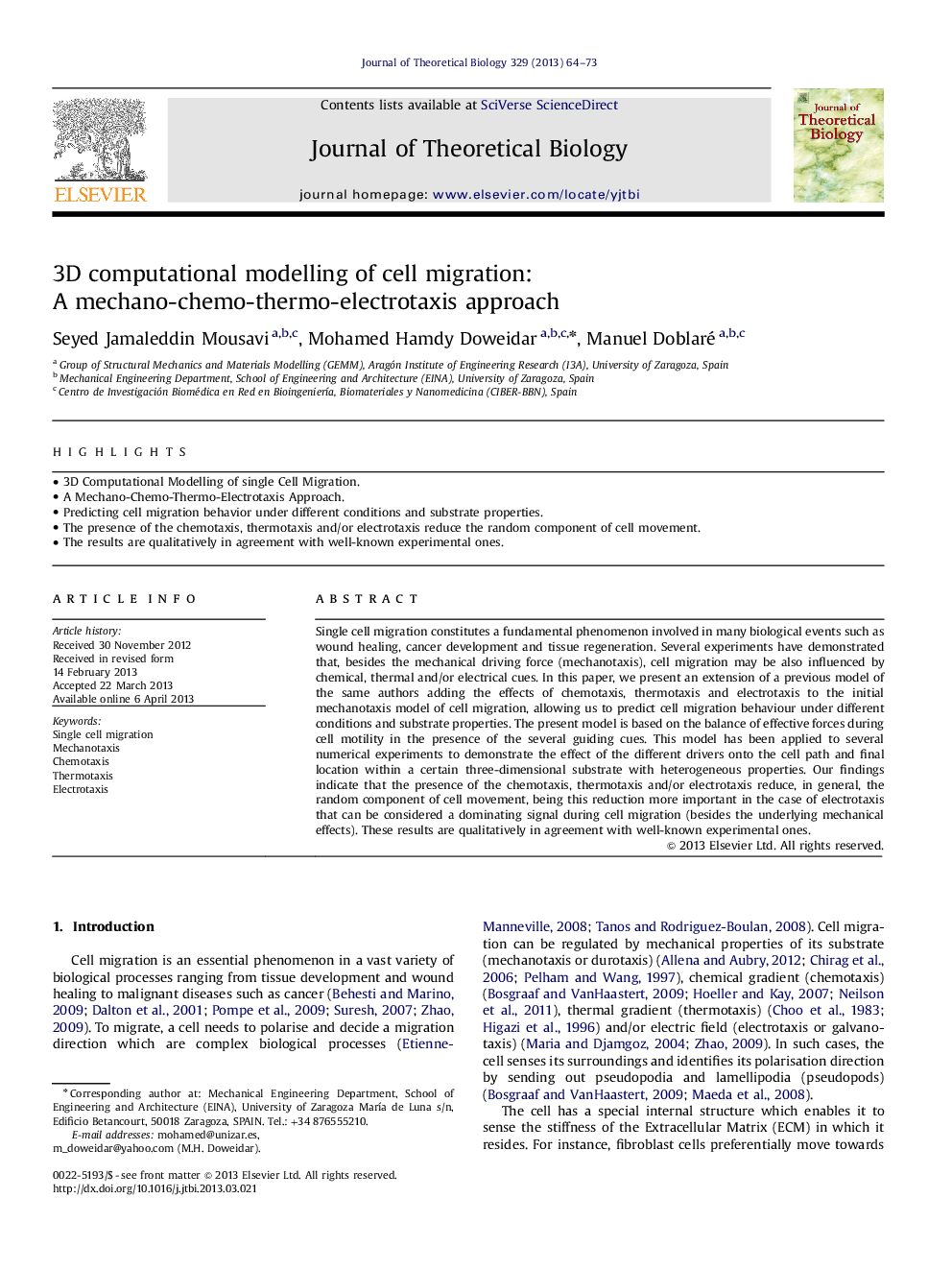| Article ID | Journal | Published Year | Pages | File Type |
|---|---|---|---|---|
| 4496412 | Journal of Theoretical Biology | 2013 | 10 Pages |
•3D Computational Modelling of single Cell Migration.•A Mechano-Chemo-Thermo-Electrotaxis Approach.•Predicting cell migration behavior under different conditions and substrate properties.•The presence of the chemotaxis, thermotaxis and/or electrotaxis reduce the random component of cell movement.•The results are qualitatively in agreement with well-known experimental ones.
Single cell migration constitutes a fundamental phenomenon involved in many biological events such as wound healing, cancer development and tissue regeneration. Several experiments have demonstrated that, besides the mechanical driving force (mechanotaxis), cell migration may be also influenced by chemical, thermal and/or electrical cues. In this paper, we present an extension of a previous model of the same authors adding the effects of chemotaxis, thermotaxis and electrotaxis to the initial mechanotaxis model of cell migration, allowing us to predict cell migration behaviour under different conditions and substrate properties. The present model is based on the balance of effective forces during cell motility in the presence of the several guiding cues. This model has been applied to several numerical experiments to demonstrate the effect of the different drivers onto the cell path and final location within a certain three-dimensional substrate with heterogeneous properties. Our findings indicate that the presence of the chemotaxis, thermotaxis and/or electrotaxis reduce, in general, the random component of cell movement, being this reduction more important in the case of electrotaxis that can be considered a dominating signal during cell migration (besides the underlying mechanical effects). These results are qualitatively in agreement with well-known experimental ones.
